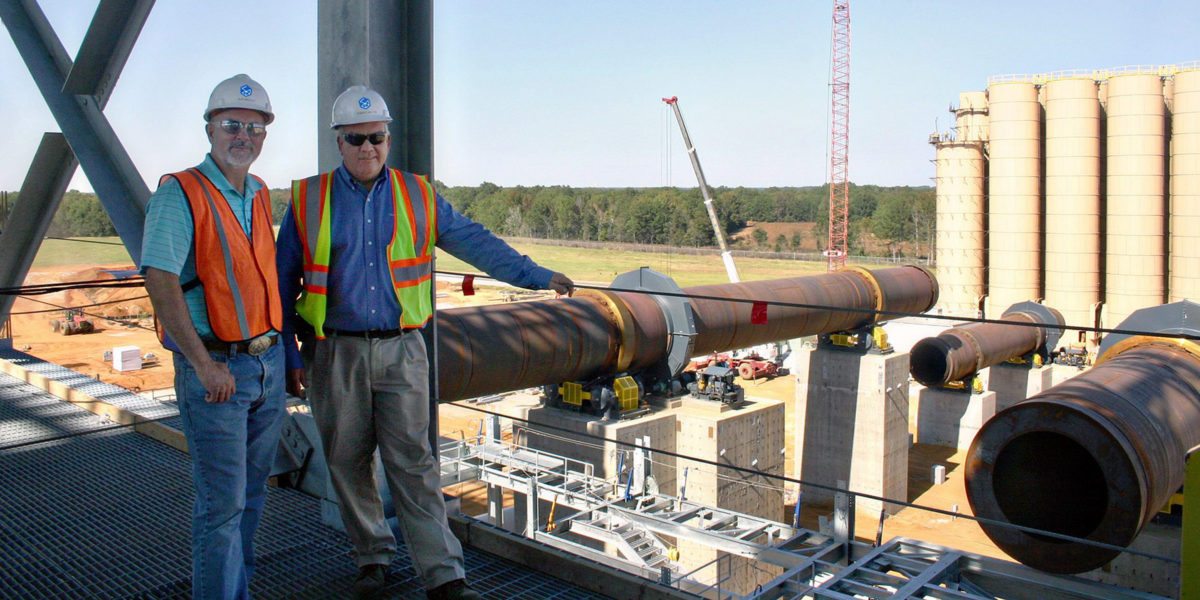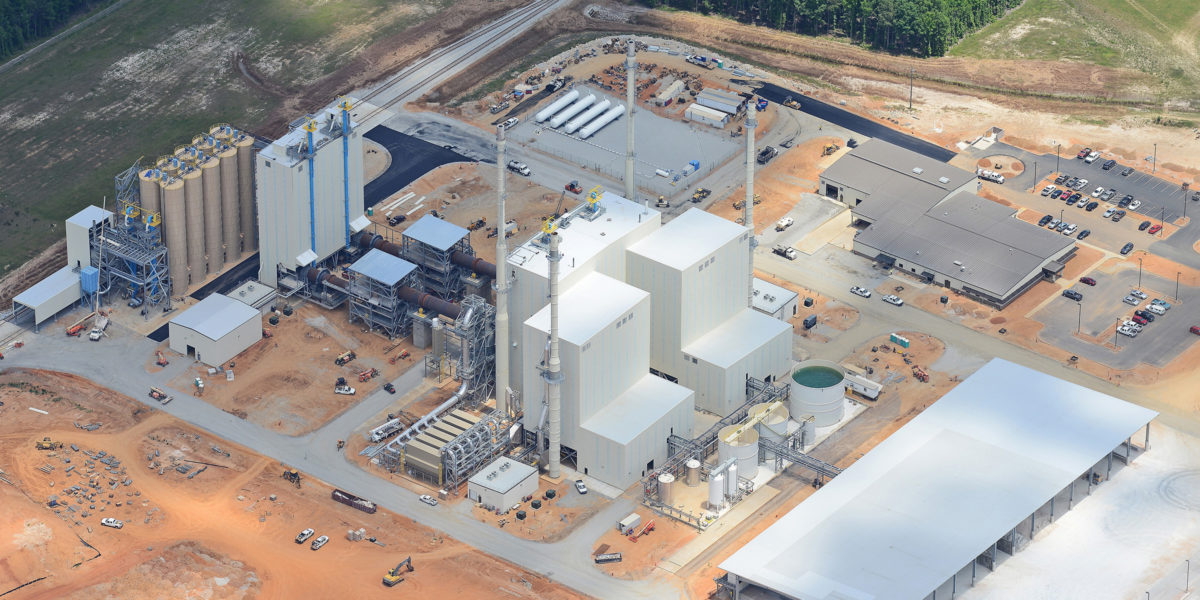
Gus Brooks with Robert Carlton at the US Ceramics (formerly Pyramax) Proppant Plant.
Explore our industrial expertise with Gus Brooks, senior industrial project manager, as he discusses what it means to be a trusted advisor and how advancing technology is transforming the manufacturing industry.
What trends do you see impacting the industrial and manufacturing industry today?
More automation and better controls technology is having a big impact – and will continue to – on our clients. There are much better ways to sense what’s going on in the process now, and the controls technology is so much more advanced than it was just 10 years ago. Our automation and instrumentation team is continuously helping clients measure and control what’s happening in their facilities.
For example, we recently completed a bagging study for a client. Their goal was to record the weight of every bag coming off the line and control that weight within plus or minus one pound – and to complete the process more rapidly. If they had gone to a bagging company and explained what they wanted to do, that company very possibly may have said, ‘Great, for $250,000 we can sell you machines that do that.’ But that isn’t the whole story – the client currently uses a 1980s, vintage machine, with some outdated electronics. These packers can be upgraded and all of the information the owner is looking for can be collected. In addition there are some older 1950’s vintage packers that need to be replaced, but there is more involved than just replacing the packers. So we’re helping them with the big picture – our technicians can create controls and reporting that integrates what the client wants to know, leveraging some of the existing machinery and investment. Ultimately, it will give the client better quality control and process validation, too.
Design programs and technology are transforming our ability to serve our clients. We recently added a package to AutoCAD specifically for creating piping and instrumentation diagrams (P&IDs). It’s pretty incredible as a resource because it connects with an entire database of equipment information, and when changes are made in the P&ID drawings or in the database, that information is communicated and coordinated back and forth. For many companies who may be concerned about accurate plant drawings, this has the potential to be a game changer. Right now, we have a team working with a client on a large P&ID program leveraging this package.
Natural resources are changing, too. Whether that’s due to the emphasis on sustainability or availability of material, this means manufacturing processes shift in response. For example, in much of the industrial minerals industry, the raw material is not as high quality as it was 20 years ago, so the processes are constantly evolving to treat sand and other impurities and enable the client to produce a great product. We’re here to help them meet changing needs.
What industries do we work in and how do we add value for our clients?
We’re pretty diverse in our spectrum of clients. It’s an interesting world because we work with many clients that do similar or intersecting things. There’s overlap between industries, and they often work together. For example, we work in non-metallic industrial minerals like kaolin and calcium carbonate – and a lot of that goes into paper and plastics, which are also markets we serve.
The primary industries we serve are industrial minerals; plastics; wood, pulp, and paper; petrochem; terminals and materials handling; bulk material handling; energy; consumer products; transportation; and more. Our engineers can do anything from a small-scale pump control project to a $180 million plant, troubleshooting small problems to designing entire facilities.
One of the things I value most is being a trusted advisor. I love it when a client calls me up and says, ‘Will you come over and let me bounce some ideas around?’ I’ll go over and we’ll talk about ideas for a few hours, and it benefits both of us. The same is true when one of our clients has a problem – they simply call us, and we work together on ideas and implement a solution.
How important is it that we are a full-service firm?
Very important. It helps our clients in so many ways, from streamlining the design process to fast track schedules. From architecture, to building systems, to process engineering, and to construction management, a client can rely on us for both expertise and coordination. It helps us serve as that trusted advisor.
This ability enables us to holistically support the manufacturing process. If we have a client in an industry growing at 15 percent each year, they need a partner who can help them plan ahead for the capacity. We can create buildings, put in the infrastructure, help with the plant layouts, and with all of the process pieces.

The US Ceramics (formerly Pyramax) Proppant Plant.
Which recent projects stand out to you in terms of delivering great impact?
Three really come to mind immediately: the Imerys (formerly PyraMax) Ceramic Proppant Plant, the Pactiv Plant, and a steam vault project for the University of Georgia.
When PyraMax came to us, they only had two employees and a block flow diagram on an 8 ½” x 11” sheet of paper. They wanted to build a ceramic proppant plant that would produce 500 million pounds per year. We led the project from a small piece of paper to a completed facility, working with contractors and other partners to accomplish it.
The Pactiv project is another special one. After a massive fire destroyed most of their plant, they partnered with us on the redesign. We were able to work closely with them, with other suppliers, and multiple subcontractors to rebuild the facility within one year of the fire and put people back to work quickly. We also identified potential efficiencies that reduced the quantity of pumps and enhanced control in the plant, which reduced their annual operational cost.
As a firm, we often work with the University of Georgia. We’re handling renovations to their College of Veterinary Medicine right now, for example. In the case of this project, it represents the overlap between our institutional and industrial work, as we performed a steam vault rehabilitation project, going into about 150 of their underground steam vaults around campus. We designed and managed repairs to the vaults that fixed leaks, reinsulated, and replaced steam traps. UGA estimates the work has saved them more than a million dollars per year in steam costs.
It’s a good representation of how industrial and energy design overlaps many markets. For me, the best part about being involved in our industrial market is that there is always a new discovery waiting to be made or new challenge to overcome.
